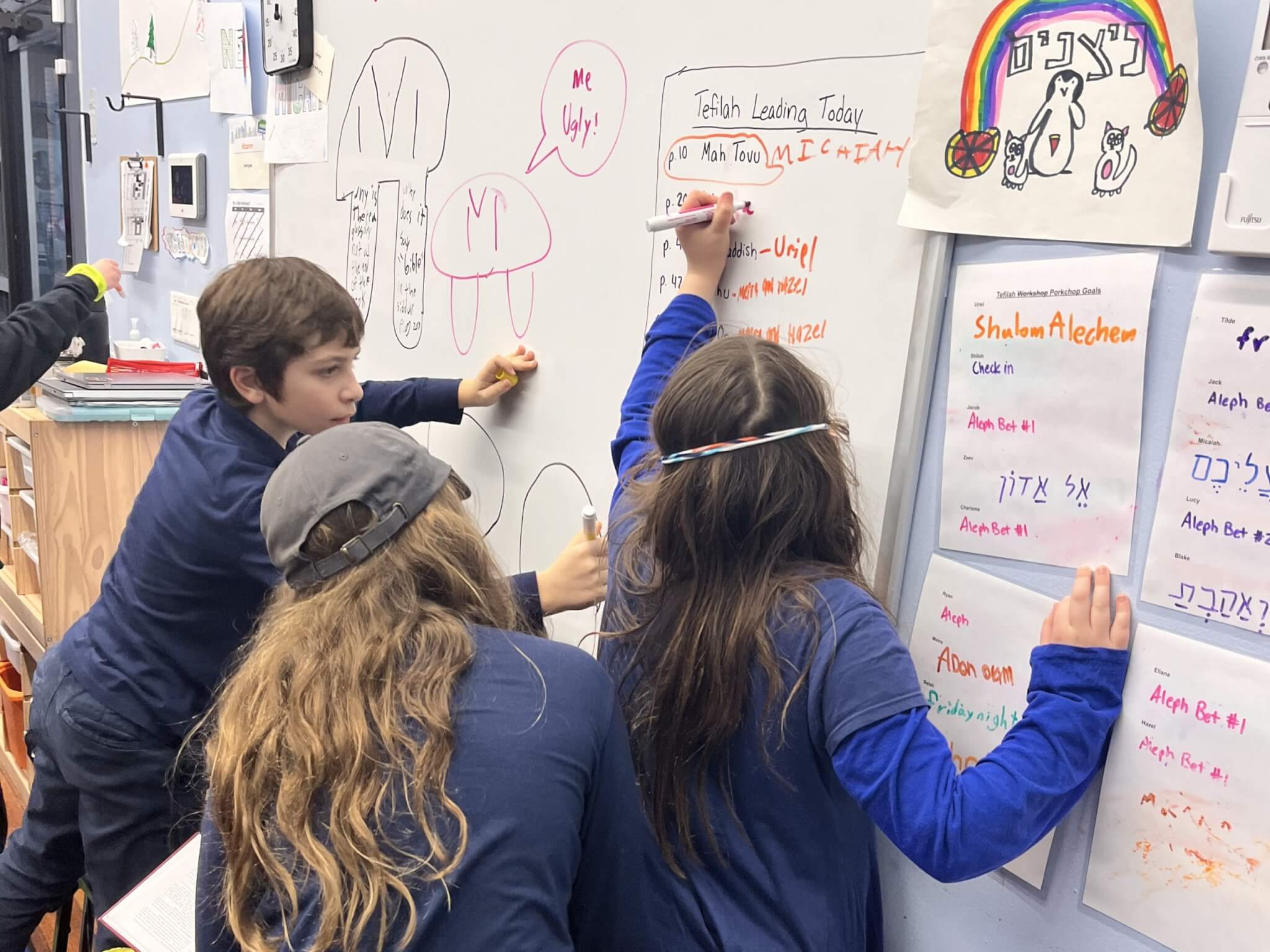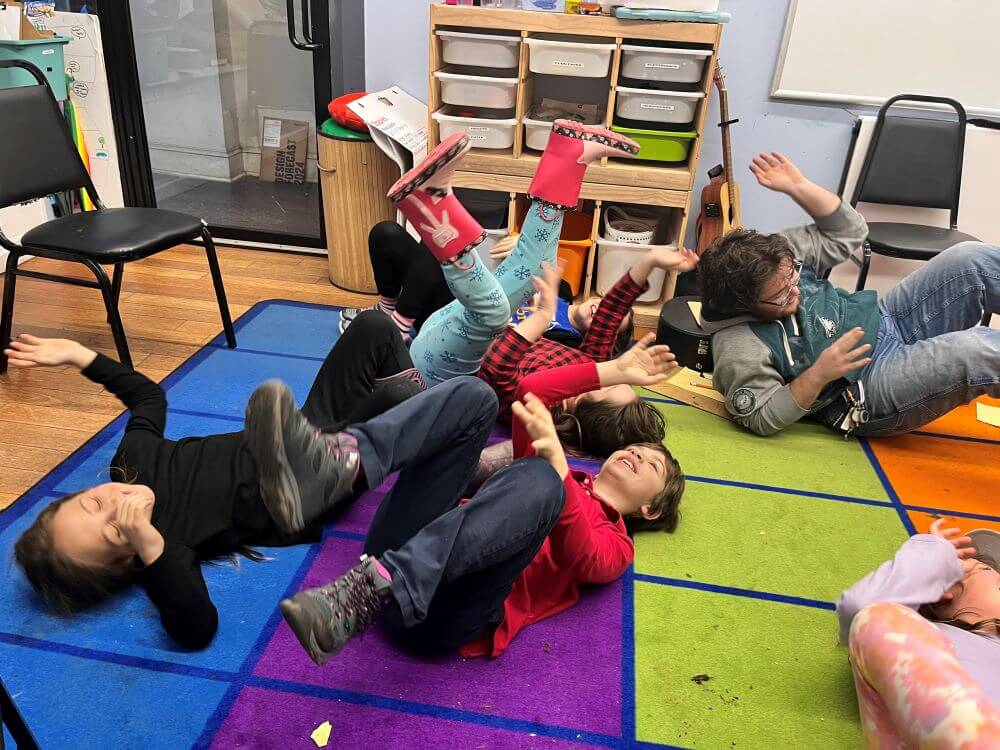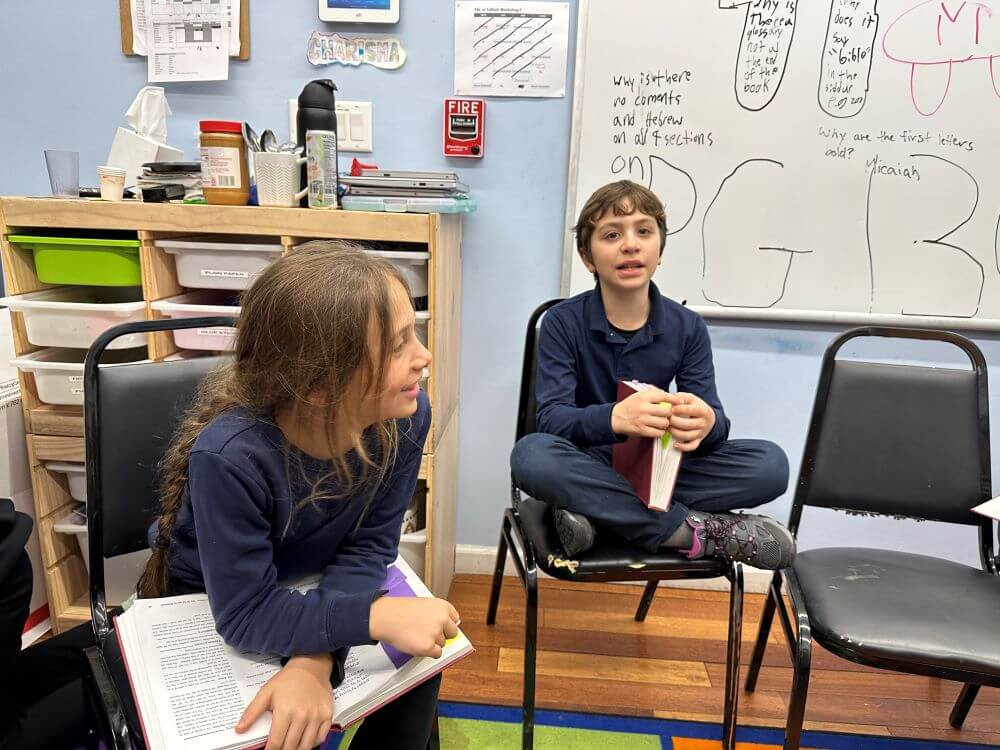
Every Thursday, the Nitzanim crew has their own Tefilah: Prayer, Music, and Movement, allowing them to connect as a Kvutzah in a different way than on the other days when they share the time with Anafim. When I started leading this group in Tefilah, I noticed a few things. Learners were getting very curious about prayer – what does it mean? Why are there so many different ways to pray? Learners were itching to lead Tefilah and to have some variety in what they were experiencing. I saw this as the perfect opportunity to allow learners to make Tefilah their own and try new approaches to our daily prayers. For the past two months, we have been using Thursdays as a time to bring in experimental approaches to Tefilah and Kavanot, allowing learners to connect to the Tefilot they sing every day through different modalities. After each experimental Tefilah session, we come together as a group and discuss how that approach to Tefilah compared to others, and how it affected our experience as a community.

For a recent Thursday Tefilah, we played with the idea of leadership choices and allowed learners to take the reigns. Before we began, learners got to choose which Tefilot they would like to lead. They could choose to lead alone or with a friend or small group. Each leader got to make some choices: What melody would we use? Will you invite everyone to try using hand motions? How many times will you repeat each part? How will you make sure you have everyone’s attention? How will you make sure that everyone feels safe and heard? We reflected that there are SO MANY CHOICES that you get to make as a leader, sometimes without even realizing it. This helped us explore the topic we have been discussing in Texploration this unit– how Jewish communities often practice the same traditions in different ways, such as the choice to sing the second line of the Shema out loud or whisper it. We are going to continue this exploration through visits to different synagogues in the upcoming weeks and an ongoing student driven group project and were excited to plant that seed in the minds of our learners.

Since beginning this weekly practice, I’ve noticed that learners are excited about Tefilah each Thursday! In addition to bringing variety into the way we connect with prayer, demonstrating that Tefilah can be fluid and flexible has allowed learners to approach Tefilah every day with more curiosity, asking questions like “why don’t we sing _____ part?” or “why does it say _____ on page 45?” Since being brought into the planning process for these days, learners now feel they have more ownership over their Tefilah experience, frequently requesting for certain Tefilot or melodies and offering to lead even when they aren’t asked. Learners have even been suggesting their own creative ways to approach Tefilah! I’m excited to continue to introduce creative modes of Jewish practice into our Thursday Tefilah. Upcoming themes include watercolor Tefilah, a Tefilah where learners use Legos to build their interpretations of different prayers, and a movement and dance Tefilah where we explore movement that helps us feel connected to each other in comparison to a movement that distracts. It is so special to be able to provide agency and creativity in every part of our day.

